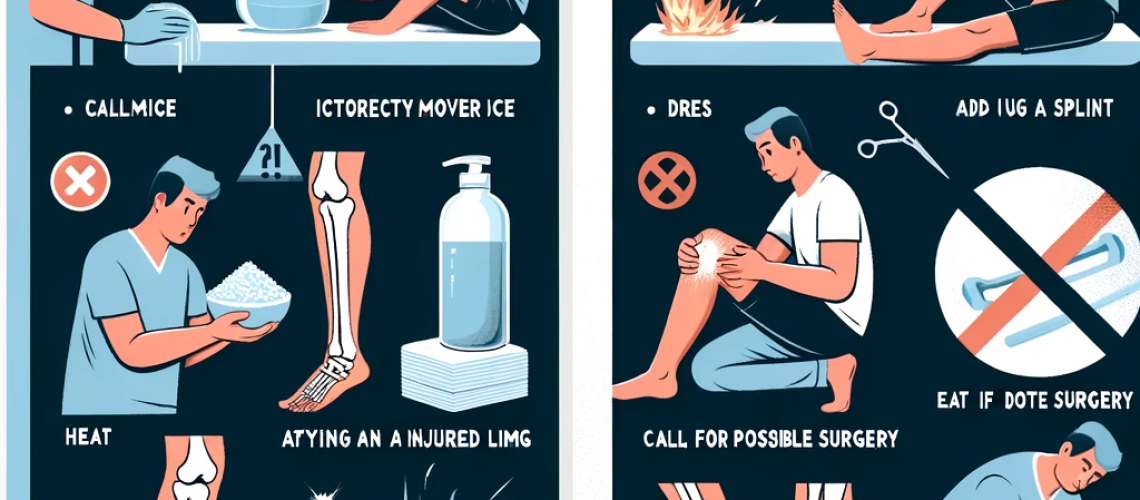When faced with the sudden shock and pain of a suspected bone fracture, knowing the right steps to take can be crucial. A fracture, or a break in the bone, is not just a common medical emergency; it’s a situation that demands immediate and appropriate response to prevent further injury. The way you react in the initial moments following a suspected fracture can significantly impact the healing process and the overall outcome.
In this article, we delve into the essential do’s and don’ts when you suspect a bone fracture. Whether you’re a sports enthusiast, a parent, or simply someone who wants to be prepared for any situation, this guide is tailored to provide you with the knowledge and practical tips to handle this medical emergency effectively. From assessing the severity of the injury to seeking professional medical help, we’ll cover all the critical steps to ensure you are well-equipped to deal with such incidents. So, let’s get started on this vital journey of understanding and preparedness.
Knochenbrüche verstehen
1. Definition and Types of Bone Fractures
A bone fracture is a medical condition where there is a partial or complete break in the continuity of the bone. This can occur as a result of high force impact or stress, or due to certain medical conditions that weaken the bones, like osteoporosis. Fractures can vary greatly in severity and type, depending on the force that caused the break and the bone involved.
The most common types of fractures include:
- Simple Fracture: Also known as a closed fracture, where the bone breaks but does not pierce the skin.
- Compound Fracture: This involves a bone that breaks and protrudes through the skin, increasing the risk of infection.
- Stress Fracture: A small crack in the bone, often caused by repetitive force or overuse, common in athletes.
- Comminuted Fracture: Where the bone shatters into several pieces, often requiring surgical intervention for repair.
- Greenstick Fracture: More common in children, where the bone bends and cracks, since their bones are softer and more flexible.
- Hairline Fracture: A partial fracture of the bone, often difficult to detect with standard X-rays.
Understanding these types can help in recognizing the severity of a suspected fracture and in seeking appropriate medical care. If you like to find out more about the various fractures feel free to check out our Comprehensive Guid to Understanding the Different Types of Fractures.
2. Common Causes and Symptoms of Bone Fractures
Fractures can occur from various causes, with the most common being:
- Accidents and Falls: High-impact sports, vehicle accidents, or simple slips can lead to fractures.
- Overuse: Repetitive motion can cause stress fractures, particularly in the feet and legs.
- Osteoporosis: This condition weakens bones, making them more susceptible to fractures even with minor stress.
Recognizing the symptoms of a fracture is crucial for timely treatment. Common symptoms include:
- Pain: Immediate and severe pain at the injury site, which might worsen with movement.
- Swelling and Bruising: Often occurs around the fractured area.
- Deformity: The limb or affected area may appear out of place or misshapen.
- Inability to Bear Weight: Especially in leg or foot fractures, bearing weight might be impossible.
- Limited Mobility: Difficulty in moving the affected area normally.
If you experience any of these symptoms, especially after an injury or accident, it’s essential to seek medical attention immediately to confirm the presence of a fracture and begin appropriate treatment.
The Do’s: Best Practices in Suspected Fracture Cases
1. Do: Stay Calm and Assess the Situation
The first and most crucial step when you suspect a fracture is to stay calm. Panic can cloud judgment and may worsen the situation. Deep breaths and a calm demeanor are essential for both the injured person and those assisting.
Assessing the Severity:
- Check for visible signs of injury such as swelling, bruising, or an abnormal angle.
- Gently inquire about the level and type of pain and whether the person can move without intense pain.
- Determine if there are other injuries or symptoms like dizziness or shock.
2. Do: Immobilize the Affected Area
Movement can exacerbate the injury and increase pain. It’s vital to immobilize the area suspected of having a fracture.
Immobilization Techniques:
- Use a splint to stabilize the area. Splints can be anything rigid, like a piece of wood or a thick magazine.
- Make sure the splint supports the area above and below the suspected fracture.
- Use bandages or cloth to secure the splint, but do not tie it too tightly.
3. Do: Apply Ice and Elevate
Reducing swelling and pain is key in the initial stages of a suspected fracture.
Applying Ice:
- Wrap ice in a cloth and apply it over the injured area.
- Avoid direct contact with the skin to prevent ice burns.
Elevation Techniques:
- Elevate the injured area above the level of the heart, if possible.
- Use pillows or folded blankets for support.
4. Do: Seek Medical Attention Immediately
Regardless of the severity, medical attention is crucial for a proper diagnosis and treatment plan.
When to Call Emergency Services:
- Call for emergency assistance if there is severe deformity, uncontrollable bleeding, or if the person is in severe pain and unable to move.
Preparing for a Healthcare Visit:
- Collect any relevant medical history or information about allergies or medications.
- Keep the injured area immobilized and elevated during transit.
- Be prepared to provide details about how the injury occurred and the symptoms experienced.
The Don’ts: What to Avoid in Suspected Fracture Cases
1. Don’t: Move the Fractured Area Unnecessarily
Moving a suspected fracture can not only cause intense pain but also lead to further damage to the bone and surrounding tissues.
Risks of Moving the Injured Area:
- Increased risk of complicating the fracture, potentially turning a simple break into a more complex one.
- Possibility of damaging nearby nerves or blood vessels, leading to additional medical complications.
2. Don’t: Apply Heat or Pressure
While it might seem soothing, applying heat or pressure to a suspected fracture is not advisable.
Why to Avoid Heat and Pressure:
- Heat can increase swelling and bleeding, delaying the healing process.
- Applying pressure could exacerbate the injury, especially if there is an underlying fracture or soft tissue damage.
3. Don’t: Try to Self-Diagnose or Treat
Self-diagnosis and treatment without medical supervision can result in incorrect care, which might worsen the injury.
Dangers of Self-Diagnosis and Treatment:
- Risk of misdiagnosing the type or severity of the fracture.
- Inappropriate treatment can lead to poor healing, increased pain, and the potential for long-term damage.
4. Don’t: Eat or Drink If Surgery Might Be Required
In cases where a fracture is severe and surgery might be necessary, it’s important to avoid eating or drinking.
Precautions for Possible Surgical Intervention:
- Consuming food or drink can cause complications if anesthesia is required for surgery.
- Fasting is often recommended to ensure a safer surgical procedure and anesthesia experience.
Zusammenfassung
In this guide, we’ve navigated through the crucial do’s and don’ts when faced with a suspected bone fracture. From the importance of staying calm and immobilizing the affected area to the critical steps of applying ice and seeking immediate medical attention, these guidelines are designed to help you manage a potentially serious situation with care and efficiency.
We also discussed what to avoid, including unnecessary movement of the injured area, applying heat or pressure, self-diagnosing, and eating or drinking if surgery may be required. Each of these points plays a vital role in ensuring the best possible outcome in the event of a fracture.
Remember, while these tips are valuable for initial response, they are not substitutes for professional medical advice. Prioritizing safety, both in preventing injuries and in responding to them, is paramount. If you suspect a fracture, it’s imperative to consult with healthcare professionals for an accurate diagnosis and appropriate treatment plan. They are best equipped to guide you through the recovery process, ensuring you or your loved one returns to good health with minimal complications.
In conclusion, understanding and adhering to these basic do’s and don’ts can make a significant difference in how effectively you respond to a suspected bone fracture. Stay informed, stay cautious, and always prioritize health and safety.

